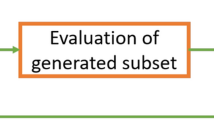Abstract
Learning with small data is challenging for most algorithms in regard to building statistically robust models. In previous studies, virtual sample generation (VSG) approaches have been verified as effective in terms of meeting this challenge. However, most VSG methods were developed for numerical inputs. Therefore, to address situations where data has nominal inputs and continuous outputs, a systemic VSG procedure is proposed to generate samples based on fuzzy techniques to further enhance modelling capability. Based on the concept of the data preprocess in the M5′ model tree, we reveal a useful procedure by which to extract the fuzzy relations between nominal inputs and continuous outputs. Further, with the idea of nonparametric operations, we employ trend similarity to present the fuzzy relations between inputs and outputs. Then, these relations are represented by possibility distributions, and sample candidates are created based on these distributions. Finally, the candidates filtered using \(\alpha\)-cut are regarded as qualified virtual samples. In the experiments, we demonstrate the effectiveness of our approach through a comparison with two other VSG approaches using five public datasets and two prediction models. Moreover, three parameters used in our approaches are discussed. However, determining how to find the most fit parameters requires further study in the future.
Access this article
We’re sorry, something doesn't seem to be working properly.
Please try refreshing the page. If that doesn't work, please contact support so we can address the problem.







Similar content being viewed by others
Explore related subjects
Discover the latest articles, news and stories from top researchers in related subjects.References
Ali SS, Howlader T, Rahman SMM (2018) Pooled shrinkage estimator for quadratic discriminant classifier: an analysis for small sample sizes in face recognition. Int J Mach Learn Cybern 9(3):507–522
Breiman L (1996) Bagging predictors. Mach Learn 24(2):123–140
Chawla NV, Bowyer KW, Hall LO, Philip Kegelmeyer W (2002) SMOTE: synthetic minority over-sampling technique. J Artif Intell Res 16:321–357
Conroy B, Eshelman L, Potes C, Xu-Wilson M (2016) A dynamic ensemble approach to robust classification in the presence of missing data. Mach Learn 102(3):443–463
Cost S, Salzberg S (1993) A weighted nearest neighbor algorithm for learning with symbolic features. Mach Learn 10(1):57–78
de Jesús Rubio J (2018) Error convergence analysis of the SUFIN and CSUFIN. Appl Soft Comput 72:587–595
Efron B (1979) Computers and the theory of statistics: thinking the unthinkable. SIAM Rev 21(4):460–480
Fard MJ, Wang P, Chawla S, Reddy CK (2016) A bayesian perspective on early stage event prediction in longitudinal data. IEEE Trans Knowl Data Eng 28:3126–3139
Gosset WS (1908) The probable error of a mean. Biometrika 6(1):1–25
Gui L, Xu RF, Lu Q, Du JC, Zhou Y (2018) Negative transfer detection in transductive transfer learning. Int J Mach Learn Cybern 9(2):185–197
Huang C (1997) Principle of information diffusion. Fuzzy Sets Syst 91(1):69–90
Huang C, Moraga C (2004) A diffusion-neural-network for learning from small samples. Int J Approx Reason 35(2):137–161
Kawakita M, Takeuchi J (2017) A note on model selection for small sample regression. Mach Learn 106(11):1839–1862
Li DC, Lin WK, Chen CC, Chen HY, Lin LS (2018) Rebuilding sample distributions for small dataset learning. Decis Support Syst 105:66–76
Li DC, Wu CS, Tsai TI, Lina YS (2007) Using mega-trend-diffusion and artificial samples in small data set learning for early flexible manufacturing system scheduling knowledge. Comput Oper Res 34(4):966–982
Meza AG, Cortes TH, Lopez AV, Carranza LA, Herrera RT, Ramirez IO, Campana JA (2017) Analysis of fuzzy observability property for a class of TS fuzzy models. IEEE Latin Am Trans 15(4):595–602
Niyogi P, Girosi F, Poggio T (1998) Incorporating prior information in machine learning by creating virtual examples. Proc IEEE 86(11):2196–2209
Pan SJ, Yang QA (2010) A survey on transfer learning. IEEE Trans Knowl Data Eng 22(10):1345–1359
Sezer EA, Nefeslioglu HA, Gokceoglu C (2014) An assessment on producing synthetic samples by fuzzy C-means for limited number of data in prediction models. Appl Soft Comput 24:126–134
Sharma A, Paliwal K (2015) Linear discriminant analysis for the small sample size problem: an overview. Int J Mach Learn Cybern 6(3):443–454
Sinn HW (1980) A rehabilitation of the principle of insufficient reason. Q J Econ 94(3):493–506
Sáez JA, Luengo J, Stefanowski J, Herrera F (2015) SMOTE–IPF: addressing the noisy and borderline examples problem in imbalanced classification by a re-sampling method with filtering. Inf Sci 291:184–203
Song X, Shao C, Yang X, Wu X (2017) Sparse representation-based classification using generalized weighted extended dictionary. Soft Comput 21(15):4335–4348
van de Schoot R, Broere JJ, Perryck KH, Zondervan-Zwijnenburg M, Van Loey NE (2015) Analyzing small data sets using Bayesian estimation: the case of posttraumatic stress symptoms following mechanical ventilation in burn survivors. Eur J Psychotraumatol 6(1):25216
Wang XZ, Wang R, Xu C (2018) Discovering the relationship between generalization and uncertainty by incorporating complexity of classification. IEEE Trans Cybern 48(2):703–715
Wang XZ, Xing HJ, Li Y, Hua Q, Dong CR, Pedrycz W (2015) A study on relationship between generalization abilities and fuzziness of base classifiers in ensemble learning. IEEE Trans Fuzzy Syst 23(5):1638–1654
Wang Y, Witten IH (1997) Inducing model trees for continuous classes. In: Proceedings of the ninth european conference on machine learning, pp128–37
Zadeh LA (1965) Fuzzy sets. Inf Control 8(3):338–353
Zadeh LA (1978) Fuzzy sets as a basis for a theory of possibility. Fuzzy Sets Syst 1(1):3–28
Author information
Authors and Affiliations
Corresponding author
Additional information
Publisher’s Note
Springer Nature remains neutral with regard to jurisdictional claims in published maps and institutional affiliations.
Rights and permissions
About this article
Cite this article
Li, DC., Shi, QS. & Chen, HY. Building robust models for small data containing nominal inputs and continuous outputs based on possibility distributions. Int. J. Mach. Learn. & Cyber. 10, 2805–2822 (2019). https://doi.org/10.1007/s13042-018-00905-2
Received:
Accepted:
Published:
Issue Date:
DOI: https://doi.org/10.1007/s13042-018-00905-2




